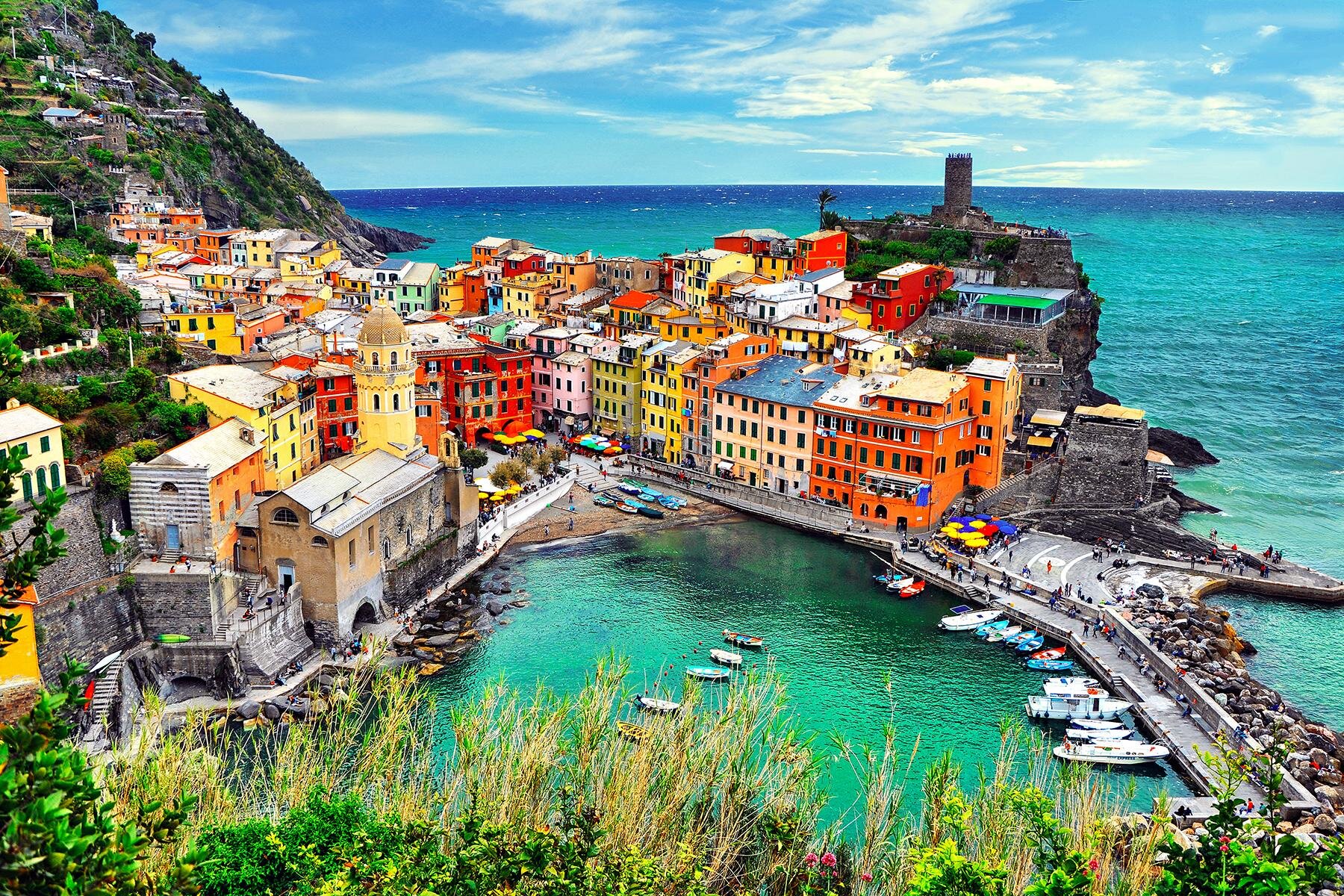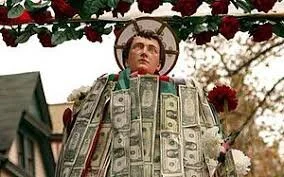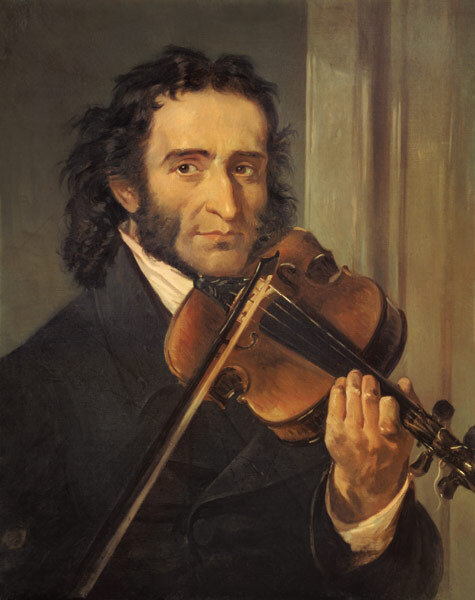By The Landlord
“You may have the universe if I may have Italy.” – Giuseppe Verdi
“I was offered a free villa in Hollywood, but I said no thank you, I prefer to live in Italy.” – Ennio Morricone
“Rome – the city of visible history, where the past of a whole hemisphere seems moving in funeral procession with strange ancestral images and trophies gathered from afar.” – George Eliot
“When thou art at Rome, do as they do at Rome.” – Miguel de Cervantes
“I couldn't settle in Italy - it was like living in a foreign country.” – Ian Rush
“Life is a combination of magic and pasta.” – Federico Fellini
Italy, that country of wonder and absurdity, of glory and disgrace, of conquering and chaos, great art and architecture; romance and violence, corruption and complexity, of the good life and the bad, of richest and poorest; of the most exquisite taste to the crassest, bling-est and cheesiest; of towering monuments and revolutionary plumbing and engineering; of invasions and burnings; of mountains and beaches, groves, vines and caves, volcanoes and floating cities; of over-the-top endless expressivity, elevation, style, sophistication and gesticulation; of tomatoes and pasta and olives and flavour based of all things, contradictorily, on simplicity; of endless twirls and syllables, superlatives and exaggeration; of invention and senate democratic foundation and convention; from the craziest to the calmest and the most brilliant to the stupidest. How do you capture this incredible country, shaped like a hammer or a booted pepper in one introduction?
It’s impossible, but this week we’re looking at least to set up a sense of this nation, its culture, history and character to music from or about it. Italy, has after all stirred many flavours into the world, not least into the culture of America. So songs might refer to one particular city such as Rome, Florence, Venice, Sienna, Milan or more, or music might capture something of its character. So much of Italy’s culture is steeped in its history after all, and its landmarks which might offer a reference point from Rome’s Coliseum to Pisa’s leaning tower. But the palette is huge and its influence is infinite.
The Italian riviera. Yes please.
My own Italian experiences are varied, many coming during very low-budget travelling trips as a teenager or just a little older. In Rome I’ve been ripped off and robbed. I was almost stabbed in Naples (that’s a whole other story), but in Florence I had the hottest, sexiest romance. I’ve experienced blistering temperatures in more than one city and coast, and extreme frozen conditions in the Alpine and Italian Tyrol climbing up and coming down on the most dangerous roads, all on a bike. I’ve seen opera, and also Björk in the amphitheatre arena in Verona. What a venue!
In bars and on streets I’ve experienced some of the worst hostility but also warmest hospitality. On one infamous trip, after all my money had been nicked, and with only my Inter-rail card left, I spent two days without food, trying to sleep on trains heading south to the heel. Down at heel indeed. But at the point of despair, a group of monks suddenly joined my carriage, and seeing my obvious emaciation, saved me with servings of bread, cheese and slices of sausage. I’ve slept in the open under Vesuvius, swum in lakes Garda and Maggiore, been bitten by the worst vicious mosquitoes and been in the biggest thunderstorms, all in that country. What is Italy? If anything it’s the land of extremes.
Not all Italy is romantic. Gomorrah, the grittiest mafia drama depiction set in urban Naples
Italy really is a crazy country, marked by greatness and madness, crime and civility from marked Leonardo Da Vinci, the Borgias, Renaissance and Michelangelo, to La Dolce Vita or Gomorrah, the true inner city Naples mafia series to America’s Sopranos. In the latter, Tony and co’s sense of being Italian comes wonderfully, and comically into focus in two particular episodes, Commendatori, where he goes with Paulie to visit counterparts in Naples, and The Ride, featuring absurd confusion and hyprocisy over funding for a five-day Italian street festival back home and paying for golden hat which adorns the statue of the carried saint.
Italy’s confusion over money and religion: a saintly effigy for the procession in the Feast of Elzéar of Sabran, The Sopranos, The Ride.
But one of the finest film’s to capture that country’s character, Paolo Sorrentino’s La Grande Bellezza, The Great Beauty:
Rome and of course the Roman Empire, is a pillar of modern culture, the foundation of many of the roads we still use, an origin of a form of democracy, of modern capitalism, invasion, land and money grabbing, but never ceases to inspire poets, writers and more:
“I found Rome a city of bricks and left it a city of marble,” proclaimed the Emperor Augustus, and indeed his reign did mark the biggest era of expansion and stability, but the Roman Empire also had more than its fair share of the bad and extremely bad, particularly his Nero, Tiberius and of course Caligula.
As huge and successful as the empire was, it was one built as much on fear as anything else. “It was an inflexible maxim of Roman discipline that good soldier should dread his own officers far more than the enemy,” wrote Edward Gibbon in The Decline and Fall of the Roman Empire.
“Rome will exist as long as the Coliseum does; when the Coliseum falls, so will Rome;
when Rome falls, so will the world,” wrote The Venerable Bede, and that building has been falling down gradually for centuries.
But Rome has inspired so such awe from around the world. “Yes, I have finally arrived to this Capital of the World! I now see all the dreams of my youth coming to life,” proclaimed Goethe.
“How beautiful is sunset, when the glow of Heaven descends upon a land like thee, Thou Paradise of exiles, Italy!” said Percy Bysshe Shelley.
“A man who has not been in Italy, is always conscious of an inferiority, from his not having seen what it is expected a man should see,” added Samuel Johnson.
“Open my heart and you will see, Graved inside of it, “Italy”, said Robert Browning.
Italy is a dream that keeps returning for the rest of your life,” adds another poet, Anna Akhmatova.
Enrico Caruso
OK, clearly the exaggeration element of the culture has got to these visitors. Can we have a more measured approach from someone who is Italian?
All road lead to Rome goes the phrase, but Tacitus inverted this and didn’t entirely look upon the city favourably. “All things atrocious and shameless flock from all parts to Rome.” But how about a contemporary, more balanced view
“Rome is a city where in every corner you have a reminder of the sacred world. That’s why I have sacred music, minimalist sacred music, which is also music I like, because at the end of the day, that’s what I want to do,” says Paolo Sorrentino.
“I like things eclectic, when one thing doesn’t go with another. That’s why I love Rome. The town itself is that way. It’s where Fascist architecture meets classic Renaissance, where the ancient bangs up against the contemporary. It has a touch of everything,” says Giambattista Valli.
“Rome is a little bit different. There is something in Rome, incredible, like in a Fellini movie. Everybody’s screaming and laughing very loud,” says Alessandro Michele.
“Rome is the city of echoes, the city of illusions, and the city of yearning,” says Giotto di Bondone.
“Rome has New York's formlessness, aimlessness, a kind of hard-boiled sophistication, blasé about everything. In their filmmaking, too, the Italians have this tongue-in-cheek sense of comedy,” adds director from New York, Paul Morrissey. But surely New York is influenced by Rome, not vice versa?
“Rome is a place almost worn out by being looked at, a city collapsing under the weight of reference,” says Graham Joyce.
Rome, like the rest of Italy is steeped in contradictions, and different eras from the Roman Empire the Renaissance, from Mussolini’s fascism in the early part of the 20th century and its alliance with Nazi Germany to the later era of democracy and boom-boom, fast cars and different corruptions, but also being a the heart of the European Union.
But your choices might delve into the far past into Italian folk and how it has shaped Italian classical or even sacred music, steeped in Catholicism, or go into baroque or opera. Claudio Monteverdi, Alessandro Scarlatti, Gioacchino Rossini, Vincenzo Bellini, and Gaetano Donizetti.
Seasons’ greetings: Antonio Vivaldi
Then of course there’s the baroque composers, headed up by Antonio Vivaldi or course, but also Andrea Gabrieli, Giovanni Gabrieli, Girolamo Frescobaldi, Giuseppe Garibaldi, Tomaso Albinoni, Arcangelo Corelli, Antonio Vivaldi, Domenico Scarlatti, Luigi Boccherini, Muzio Clementi, Giuseppe Gariboldi, Luigi Cherubini, Giovanni Battista Viotti and Niccolò Paganini. Or going into he 19th century and beyond, that key figure Giuseppe Verdi and the Romantic traditions that stretched into 20th century, exemplified by composers of the so-called giovane scuola or young school, still influenced by the previous century, including Arrigo Boito, Ruggiero Leoncavallo, Pietro Mascagni, and Francesco Cilea and Giacomo Puccini.
Niccolò Paganini is one of the most fascinating figures of Italian music, a true rock star and sex symbol of the violin, so astonishingly brilliant and fast in his playing skills he frightened the life out of many who encountered hikm. He died prematurely from syphilis in 1840, and wasn’t even properly buried until four years after his death because he was thought to be possessed but the devil. His striking appearance, thin, chiselled hollow cheeks, pale, deathly looking, extremely tall, and often dressed in black, he was like a goth figure. He also had abnormally long, thin fingers and when not looking at sheet music, would, like iconic performers rock and pop, flail about on stage, earning him the nickname ‘rubber man’.
The devil’s violinist and early goth rock god, Niccolò Paganini
It is now believed that Paganini’s unusual finger length, which allowed him to play three octaves in one hand span, was due to Marfan syndrome, a genetic disorder. And his ability to play at incredible speed could be attributed to Ehlers-Danlos syndrome, a disorder which causes increased flexibility and a lack of coordination.
Casts of Paganini’s massive hands
Italy’s influence on the music of the world is immense of course, not merely in terms of how Latin has helped formed so many European languages, but names of instruments and words related to expression, dynamic volume, tempo, mood, and types of compositions all stem from that culture everything from opera, concerto, sonata or solo to alto, bass or soprano, adagio, andante or vivace, pianissimo to fortissimo, tremolo to allegretto.
Italy is steeped in stars of opera, from Caruso to Pavarotti, but hasn’t really excelled in pop music, has it? Zucchero Fornaciari? Hmm. Italian hip hop, anyone? Perhaps you can prove this to be wrong.
But while Italian popular culture seems most marked by all-day TV programmes with bronzed middle-aged male presenters and scantily clad women, there have been some notable stars of the pop genre. Ireland’s Roisin Murphy, in her latest album, was particularly inspired the great
Raffaella Carra, an amazing performer who was Madonna before Madonna and Lady Gaga before Lady Gaga. Here she is doing A far l'amore comincia tu:
And while Italy’s beautiful language has struggled to capture the grit, grime and variety of sounds associated with rock and pop lyrics, there is this gem by Adriano Celentano, also featuring Raffaella Carrà, in which nonsense lyrics parody British and American pop in Prisencolinensinainciusol:
What about a bit of Italian house or electro pop? Here’s Ryan Paris, in er, Paris, with Dolce Vita
So then, that’s quite enough Italian excess from me. Time to hand over to our guest guru. I’m delighted to welcome back to the big feast our very own perfecto signor philipphilip99! Place your Italy-inspired songs in comments for deadline last orders on Monday at 11pm UK GMT for playlists published on Wednesday. Saluti!
New to comment? It is quick and easy. You just need to login to Disqus once. All is explained in About/FAQs ...
Fancy a turn behind the pumps at The Song Bar? Care to choose a playlist from songs nominated and write something about it? Then feel free to contact The Song Bar here, or try the usual email address. Also please follow us social media: Song Bar Twitter, Song Bar Facebook. Song Bar YouTube. Subscribe, follow and share.
Please make any donation to help keep Song Bar running:








